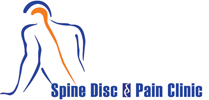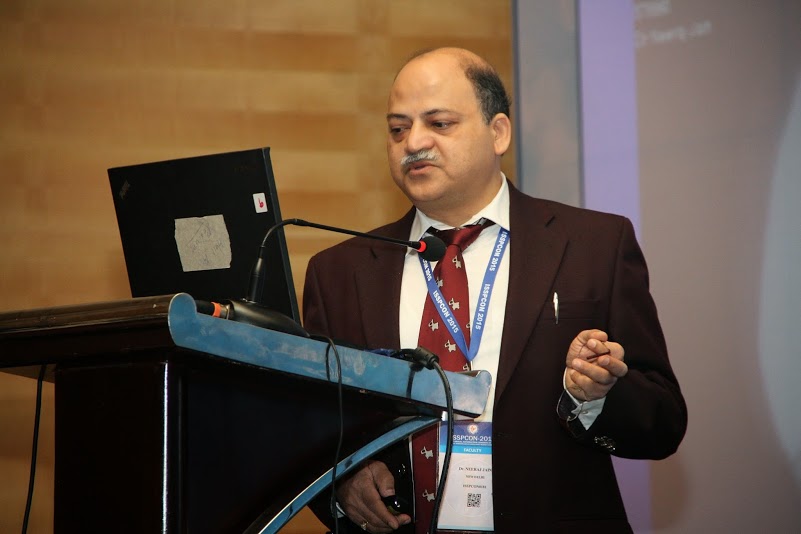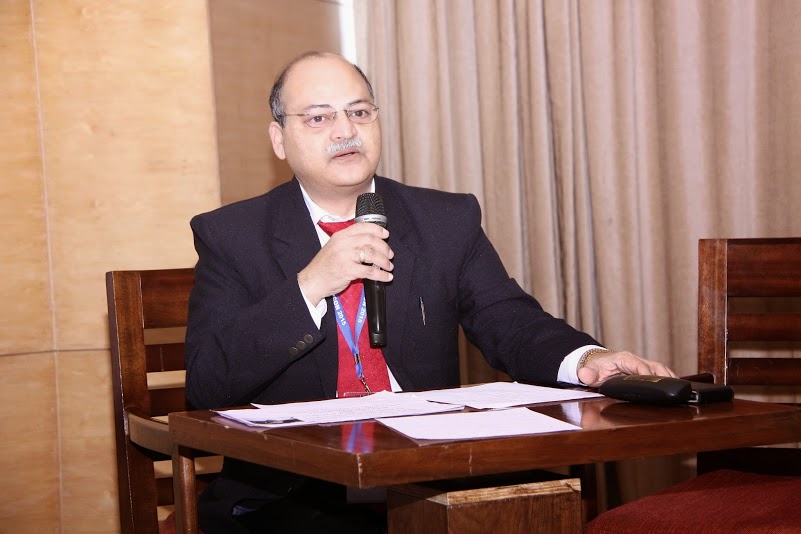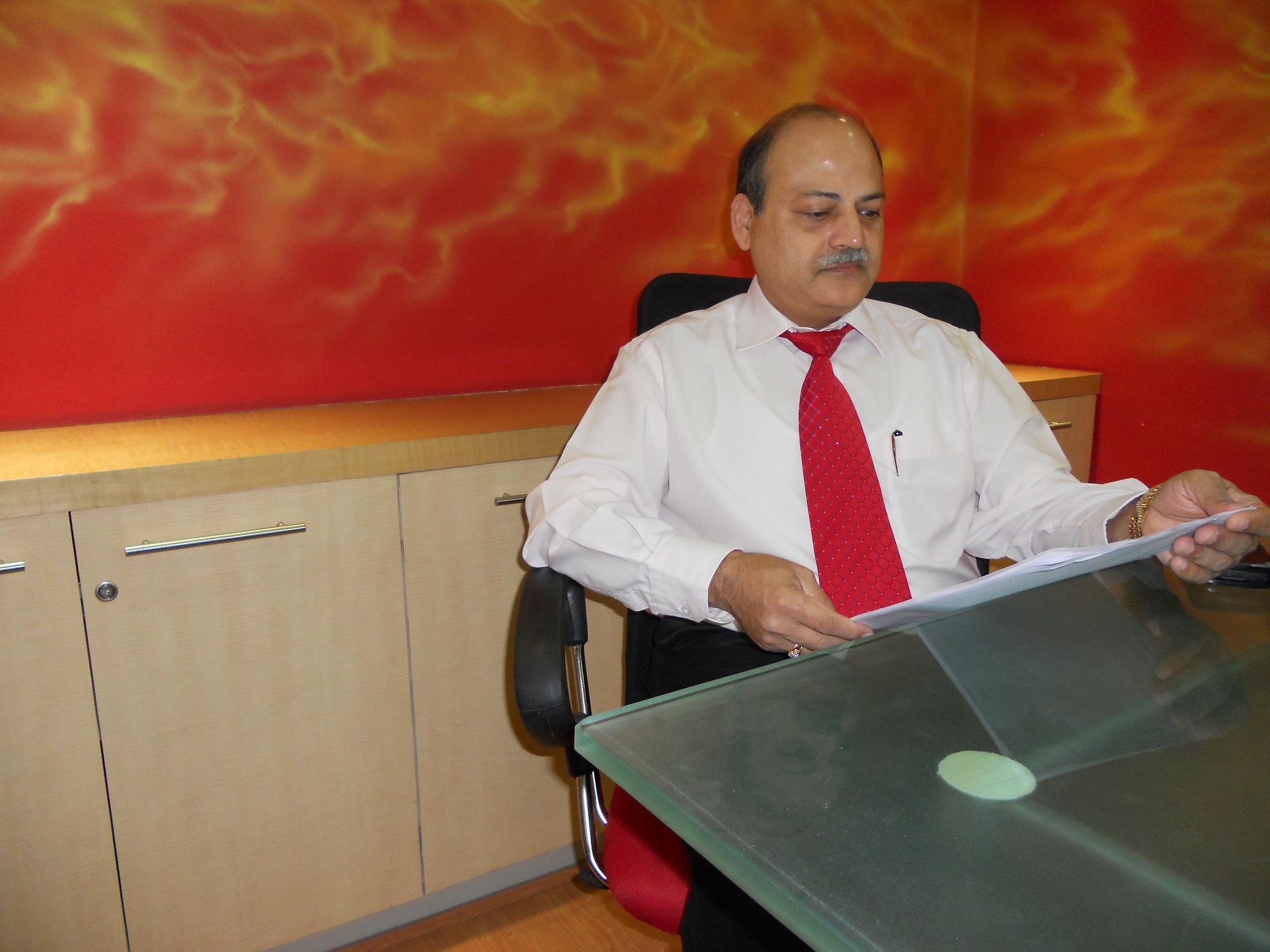Vertebroplasty And Balloon Kyphoplasty

Dr. Neeraj Jain
MBBS, MD, FIMSA, FIPP(USA)
For all these and many like them Dr. Neeraj Jain’s massage is “pain is real and treatable- there is no merit in suffering”. You must see a pain specialist if you still suffer from pain after a month of conservative treatment. Sooner y our pain is managed better are the overall results. Including various kinds of pain like Back pain, headache and Cancer Pain.
Experience:
Sr. Consultant Spine & Pain Specialist
Max Hospital, Pitampura, New Delhi
January 2014 – Present (2 years)
Sr. Consultant Spine & Pain Specialist
Sri Balaji Action Medical Institute
March 2007 – Present (8 years 10 months)
Sr. Consultant Spine & Pain Specialist
Spine Disc & Pain Clinics
January 2002 – Present (14 years)
Clinic Name SPINE DISC & PAIN CLINIC RU-23 Pitampura
New Delhi, Delhi 110088
India
Address SPINE DISC & PAIN CLINIC LD-122 Pitampura
New Delhi, Delhi 110088
India
Days Available: Monday-Saturday & Monday-Sunday (except Wed & Sat)
Timings 7-9 PM & 10-12 Noon
Sr. Consultant Spine & Pain Specialist
Sant Parmanand Hospital
2008 – 2014 (6 years)New Delhi Area, India
Vertebroplasty And Balloon Kyphoplasty
PERCUTANEOUS VERTEBROPLASTY (PVP) / KYPHOPLASTY
A NOVEL APPROACH TO MANAGEMENT OF VERTEBRAL BODY FRACTURES:
As life expectancy is increasing so is the incidence of vertebral body (VB) fractures now being the commonest fracture of the body. PVP is an established interventional technique in which bone cement is injected under local anaesthesia via a needle into a fractured VB with imaging guidance providing instant pain relief, increased bone strength, stability, decreasing analgesic medicines, increased mobility with improved quality of life and early return to work in days.
In this era of minimally access surgery replacing open surgeries, PVP is a novel procedure & should be in the first line of management in place of conservatism or major spine surgery for painful uncomplicated compression fracture spine.
Morbidity & consequences of spinal fracture:
- Traumatic VB # is painful condition requiring bed rest restricting daily activities markedly
- Left untreated it can cause DVT, increase osteoporosis, loss of VB height, respiratory & GI disturbances, emotional & social problems secondary
- to unremitting pain, loss of independence with high cost of rehabilitation.
- High risk of primary or consequential damage to neural , bony or disc element
- Increased wedging, deformity & increase incidence of adjacent VB #
- Chronic pain of altered spine mechanics
- Uncomfortable braces & sleep disturbance because of pain & discomfort with its sequels.
Morbidity & complications of spinal surgery:
- Cost of surgery and hospital treatment
- Cost of implants
- Phobia of surgery
- Prolonged recovery period & Extensive rehabilitation
- Changed spinal mechanics & transition syndrome
- Major surgery & anesthesia with its own complications
OUTCOME:
- PVP is a novel procedure with high benefit to risk ratio, which is highly underutilized in relation to the high prevalence of the vertebral #.
Different studies show an immediate pain relief in (85 – 90)% of patients with low complication rate ranging from (1-5)% depending upon the type of lesion. - PVP does augment height of VB but ideal would be kyphoplasty .
- Patient is either off medicine or on reduced doses.
- Patient feels so well that he almost forgets if he had VB #
discs rupture or hernia patient would need surgery. Non-operative treatment is sufficient in most of the patients, although patient selection is important even then. If despite the ozone therapy the symptoms persist, Percutaneous intradiscal decompression can be done with Drill Discectomy/ Laser or Coblation Nucleoplasty/ Biacuplasty are good alternatives before open surgerical Discectomy which has to be contemplated in those true emergencies, as mentioned above as the first choice.
DEKOMPRESSOR DRILL DISCECTOMY
A mechanical device cuts & drills out the disc material debulking the disc reducing nerve compression curing Sciatica & Brachialgia. It comes in needle size of 17G for lumbar discs & 19 G for cervical discs. In lumbar region postero-lateral approach is used & in cervical discs anterolateral approach is used. In Biacuplasty radiofrequency energy is used in bipolar manner heating & shrinking the disc & making it harder as well for weight bearing. In Laser or Coblation Nucleoplasty energy is usedto evaporate the disc thereby debulking to create space for disc to remodel itself. Dr. Neeraj Jain‘s massage is “pain is real and treatable- there is no merit
in suffering” “No one needs to suffer as so many good and effective treatments are now available at specialty pain clinics”. You must see a pain specialist if you still suffer from pain after a month of conservative treatment. Sooner your pain is managed better are the overall results. With interventional pain management patients are getting back to normal life.
BIBLIOGRAPHY
- Olmarker K, Rydevik B. Pathophysiology of sciatica. Orthop Clin North Am 1991; 22:223-234.
- McCarron RF, Wimpee MW, Hudkins PG, Laros GS. The inflammatory effect of nucleus pulposus: a possible element in the pathogenesis of low-back pain. Spine 1987; 12:760-764
- Bogduk N, Aprill C, Derby R. Epidural steroid injections. In: White AH, eds. Spine care. Vol 1. St
- Louis, Mo: Mosby, 1995; 322-343.
- Dussault RG, Kaplan PA, Anderson MW. Fluoroscopy-guided sacroiliac joint injections. Radiology 2000; 214:273-277.
- Kinard RE. Diagnostic spinal injection procedures. Neurosurg Clin N Am 1996; 7:151-165
- Deer T, et al.. Initial experience with a new rechargeable generator: A report of twenty systems at 3 months status postimplant in patients with lumbar postlaminectomy syndrome. Abstracts of the 9th Annual Meeting of the North American Neuromodulation Society, Nov 10-12, 2005, Washington, D.C.
- Dr. Neeraj Jain. Balloon neuroplasty: expanding the scope and effectiveness of interventional techniques for management of pivd with disco-radicular conflict in new and previously failed interventions or surgeries. 1st WIPF 2013, 911939 _ WIPF_DEF.indd 67, 8/11/13 17:27
Vertebroplasty/Kyphoplasty: A Novel Approach for Treatment of Spine Fractures
Neeraj Jain
Senior Consultant Spine & Pain Specialist, Spine & Pain Clinics, Sri Balaji Action Medical Institute,
Max Hospital, Pitampura, New Delhi & Sant Parmanand Hospital, New Delhi, India
Abstract: As life expectancy is increasing so is the incidence of vertebral body (VB) fractures now being the commonest fracture of the body. Percutaneous Vertebroplasty/ Kyphoplasty (PVP) is an established interventional technique in which bone cement is injected under local anaesthesia via a needle into a fractured VB with imaging guidance providing instant pain relief, increased bone strength, stability, decreasing analgesic medicines,
increased mobility with improved quality of life and early return to work in days. In this era of minimally access surgery replacing open surgeries, PVP is a novel procedure & should be in the first line of management in place of conservatism or major spine surgery for painful uncomplicated compression fracture spine. PVP is a novel procedure with high benefit to risk ratio, which is highly underutilized in relation to the high prevalence of the vertebral fractures. Vertebroplasty is a palliative procedure and does not correct the underlying cause of the vertebral fracture. Medical management of osteoporosis or malignancy must therefore be initiated and continued.
INTRODUCTION
Discovering the fact that fracture /# vertebrae is the commonest # of body, its incidence >the # hip, it becomes imperative to take it more seriously. With increasing life span there is more of aged osteoporotic population, more so due to sedentary indoor lifestyle and post menopausal osteoporosis. Diabetics, smokers & alcoholics are at higher risk ofdeveloping osteoporosis. I have seen such alcoholic patient developing six spine fractures in just three months time from a single fracture being
on complete bed rest. Stable VB # are normally treated conservatively with bed rest, strong analgesics, removable braces, a programmed progressive ambulation and physiotherapy. Fractures with > 50% of anterior VB collapse or > 20% of sagital angulations are potentially unstable and may require posterior instrumentation and fusion if not cemented in time. For burst # pedicle instrumentation with extension segmental constructs are required. PVP is not ideal for # dislocations or # distractions. Spine surgeon has to be consulted if patient needs operative spine stabilization. Quick fix of fracture spine makes patient walk back same day instead of bed rest of months together avoiding morbidity & mortality of prolonged
Correspondence: Dr Neeraj Jain, Senior Consultant Spine & Pain Specialist, Spine & Pain Clinics & Sri Balaji Action Medical Institute, Max Hospital, Pitampura, New Delhi & Sant Parmanand Hospital, New Delhi. e-mail: managepain@yahoo.com www.spinenpain.com
bed rest, making bedridden patient walk, in a way bringing patient back
to normal life.
VERTEBROPLASTY: AN OVERVIEW
Percutaneous Vertebroplasty (PVP) is an established interventional technique in which rapidly hardening surgical polymethyl methacrylate bone cement is injected under local anesthesia via a large bore needle into a vertebral body (VB) under imaging guidance providing increased bone strength, stability, pain relief, decreased analgesics, increased mobility with improved QOL and early return to work. Kyphoplasty has the added advantage of addressing fracture with spinal deformity and
appears to be associated with fewer instances of bone cement extravasations As per Greek mythology pain was thought to be due to intrusion of particles into soul, now pain relief is done by intrusion of particles into bone. The bone of content is to fill bone with content. In this era of MAS replacing open surgeries, PVP is a novel procedure & should be in the first line of
management in place of painful conservatism or major spinal surgery with a list of complications in polytrauma settings for painful uncomplicated VB #; especially when the spine surgery is relatively complicated or patient refuses due to surgery phobia or cost involved or there may be comorbid conditions /injuries deterrent for surgery. PVP is a big help in polytrauma setting when stabilizing spine does lot of good to the patient’s overall management
INDICATIONS
Started in 1984 by Galibert PVP is done in host of indications: Senile osteoporotic compression # remains the commonest Indication (83%). Both men and women are at risk for spinal fractures, with over 700,000 new fractures occurring every year. In fact, one in four women over 50 will suffer an osteoporosis related spinal fracture. Even more startling, spinal fractures are twice as likely as hip fractures. And they’re three times more common than breast cancer. Yet as many as two-thirds of spinal fractures go untreated.
- Painful new or progressive osteoporotic collapse # refractory to medical therapy or dosage of analgesia leads tounacceptable side effects.
- Complicating Co-morbid diseases, on steroids & received transplant.
- Metastatic VB #, Multiple Myeloma VB # (3%). Approximately 30% of patients with various neoplastic conditions develop symptomatic spinal metastases during the course of their illness & pain is the presenting complaint in the majority of cases.
- Aggressive painful VB haemangioma
- Vertebral osteonecrosis
- For strengthening VB before major spinal surgery.
- The benefit has been extended to the traumatic uncomplicated VB
compression # (VCF) (14%) which is commoner in younger age
group with active life profile and prime of their career where strict
bed rest and acute or chronic pain are unacceptable and they are
more demanding for proactive treatment approach so as to be back
to work ASAP.
To reduce loss of vertebral height and possibility of continued collapse
CONTRAINDICATIONS
- Pre-existing neurological deficit
- Burst fractures (relative C/I)
- Fracture related spinal canal stenosis
- Uncorrectable coagulation disorders
- Allergy against bone cement or contrast media
- Unable to lie prone
LONG-TERM MORBIDITY & CONSEQUENCES OF VERTEBRAL COMPRESSION FRACTURES
Whether painful or not, the long-term consequences of VCF can be devastating and can include:
- Traumatic VB # is painful condition requiring bed rest restricting daily activities markedly as “spine cripples”.
- Left untreated it can cause DVT, increase osteoporosis, loss of VB height, respiratory & GI disturbances, emotional & social problems secondary
- to unremitting pain, loss of independence with high cost of rehabilitation.
- High risk of primary or consequential damage to neural, bony or disc elements.
- Increased wedging, deformity & increase incidence of fall and adjacent VB #.
- Chronic debilitating pain of kyphosis & altered spine mechanics.
- Uncomfortable braces & sleep disturbance because of pain & discomfort with its sequels.
- Decreased pulmonary function and increased lung disorders , 9% reduction in vital capacity per #
- Decreased appetite and potential for malnutrition due to stomach compression & visceral crowding.
- Five-fold increased risk of future vertebral fractures after the first and 75-fold increased risk after 2 or more vertebral fractures coupled with low bone mass
- Increased dependence on family and friends
- 40% Clinical anxiety and/or depression
- Loss of self-esteem and compromised social roles
- 23-34 % increased age adjusted mortality compared with patients without VCF
- Women unaware that they have vertebral fractures have a 16% increased mortality compared to women without fracture
- Nine-fold increased risk of mortality in 4 years, compared with 7- fold increased risk with hip #
- Women with vertebral fractures are 2-3x more likely to die of pulmonary causes than those without fractures
MORBIDITY & COMPLICATIONS OF SPINAL SURGERY
- Cost of surgery and hospital treatment
- Cost of implants
- Phobia of surgery
- Prolonged recovery period & Extensive rehabilitation
- Changed spinal mechanics & transition syndrome
- Major surgery & anesthesia with its own complications
- Anaesthesia related
- DVT
- Mechanical Pulmonary
- Medical morbidity
- Infection
- Hardware related Persistent pain
- Implant migration
- Spinal cord/nerve injury Pseudoarthrosis
- Sexual dysfunction
- Transition syndrome
PRE-OPERATIVE WORKUP
Detailed history & investigation including coagulation profile. Neurological battery checkup of motor / sensory / reflexes should be done pre & post operatively & notified. In neurological deficiency wait for 72 hrs for spinal shock to wean off if there was any and then take decision accordingly X-ray spine in A/P & lat view. CT is more informative of bone & # morphology. MRI is good for soft tissue injuries e.g. spinal cord/ root damage, hematoma, canal stenosis and ligamentous injury
Ask for pedicle size in all dimensions and construct a 3D image aiming needle placement and cement filling mentally in scan room itself asrehearsal of PVP. This reduces operative time & gives better results. Outcome with risk & complication should be well informed & consented
HOW TO PERFORM PVP STEP BY STEP
Sedate with fentanyl & midazolam. To have a feedback in case of any eventuality instantly, only sedate the patient. Start oxygen, monitor vitals. Prone positioning with adequate padding. Fix fluoroscope view as desired & check for its movements. Total aseptic precautions of major surgery. Cleaning & fully draping of the patient and the C-Arm.
Do skin marking & measurements & Give liberal local anaesthesia from skin up to the bone. Adjust fluoroscope from P/ A to oblique to see “Scottie dog” with pediclein maximum oval view with flattened end plates, hit the superior lateral quadrant of pedicle oval for transpedicular approach. Alternatively parapedicular route is used in thoracic region & antero-lateral approach for cervical vertebra.
Conventionally PVP is done by hammering the vertebroplasty needle through the bone. Here we used light weight drill to bore through the vertebra. With drill one can do a graduated drilling starting from smaller gauze wire, this allows extra scope for maneuvering needle to the desired most location in VB which is difficult to attain with hammered bone biopsy needle which by its impact cause unacceptable distraction of # fragments & intense pain.
It is important to set the needle at exact entry site & side with right trajectory aiming the # defects In lateral view needle should go through middle of the pedicle going up to anterior 1/3 of VB.
In P/A view the needle can be in midline or paramedian depending upon # & if uni/bipedicular approach is planned
Wash haematoma of VB with saline. Do bone biopsy if there is any doubt about # lession. Do dye test (vertebral venography). Always wash dye with saline before injecting cement to have good view of cement flow. Make cement more radiopaque by adding barium /or tungsten. Then inject cement with 1 or 2 ml leurlock syringes strictly under fluoroscope in lateral view & cross checking in P/A view. Stop injecting either there is adequate filling or at the first sight of ectopic cement leak. Total cement
volume varies as per fracture morphology, osteoporotic cavitation & level of vertebra. Keep sample cement to see for hardening. Remove needle with rotational movement before cement hardens.
COMPLICATIONS OF PVP/ KYPHOPLASTY
- PVP is generally safe with low risk.
- Ectopic cement leak is frequent but generally inconsequential..v
- Symptomatic cement extravasation incidence depends upon etiology of fracture.
- Osteoporosis 1-2%
- Neoplasm 5-10%
- Location of ectopic cement leaks
- Epidural
- Foraminal
- Paravertebral
- Disc
OUTCOME
PVP is a novel procedure with high benefit to risk ratio, which is highly underutilized in relation to the high prevalence of the vertebral #.
Different studies show an immediate pain relief in (85 – 90)% of patients with low complication rate ranging from (1-5)% depending upon the type of lesion.
PVP does augment height of VB but ideal would be kyphoplasty.
Patient is either off medicine or on reduced doses.
Patient feels so well that he almost forgets about VB #.
Pain relief is by virtue of different mechanisms postulated :
- Cementing of # fragments
- Thermal neurolysis of VB nerve ending, sinu-vertebral nerve & DRG due to heat of polymerization
- Washing away of nociceptor chemicals
- Neurolytic action of liquid monomer
- By allowing early ambulation decreasing pains of immobility & bed rest
NEW DEVELOPMENTS
- Non PMMA cements
- Bioactive glass
- Hydroxyapatite
- Osteoconductive coral granules
- Composite cements
- Ideal cement volumes
- Variations of technique
Kyphoplasty or Balloon Vertebroplasty is cementing the fractured vertebra after creating cavity, is ideal for collapse osteoporotic # with height loss & can be employed in selected traumatic wedge collapse VB # with height loss.
Balloon kyphoplasty
- Restores vertebral body height
- High pressure ballooning (150-400 psi) followed by cement injection into cavity created by balloon
- fewer complications resulting from cement extravasation
- reduction in morbidity of kyphosis Clinical outcome data
- 22 published observational studies
- Retrospective designs
- Concurrent treatment modalities
- Three series of >250 patients
- Three series of >250 patients
- Five published case series
- Largest describes 188 procedures in 78 patients with minimum 1 year follow up (Coumans JV et al J Neurosurg2003)
- No comparisons with vertebroplasty or conservative therapy
- Pain relief scores similar to those achieved by vertebroplasty
- Adequate training
- Meticulous technique
- Careful patient selection
- If you don’t take up the job the Robots will take over.
CONCLUSION
- With rich experience in osteoporotic PVP one can comfortably pass the benefit to traumatic # where -it is more rewarding & satisfying.
- With PVP you just don’t manage pain rather you treat it. It is also important to remember to address the underlying condition of osteoporosis. Improve patients bone health and reduce risk for future fractures through a combination of medication, diet, exercise and lifestyle modifications.
- Very few people die of pain, many die in pain and even more live in pain, some of them are sequel to spine traumatic fractures, a reversible suffering.
- We have to keep pace with patients needs.
- PVP may be is the future of uncomplicated VCF management.
- kyphoplasty has the added advantage of addressing spinal deformity and appears to be associated with fewer instances of bone cement extravasation.
- Pain means punishment, we can avoid the chronic punishment of VCF with PVP avoiding all D’s of disability, depression, drugs dependence, deformity, dissociation & dejection.
- In future we are looking for high radiopaque biodegradable or bioactive bone pastes or cement or glues with more procedural time relaxation which will strengthen the bone while inducing new bone growth.
- Vertebroplasty is a viable treatment and possible standard management of the pain and disability of vertebral fractures needing,
- Galibert P, Deramond H, Rosat P, Le Gars D. Preliminary note on the treatment of vertebral angioma by percutaneous acrylic vertebroplasty [in French]. Neurochirurgie 1987;33:166-168
- Jensen ME, Evans AJ, Mathis JM, Kallmes DF, Cloft HJ, Dion JE. Percutaneous polymethylmethacrylate vertebroplasty in the treatment of osteoporotic vertebral body compression fractures: technical aspects. AJNR Am J Neuroradiol 1997;18:1897-1904
- Mathis JM, Petri M, Naff N. Percutaneous vertebroplasty treatment of steroid-induced osteoporotic compression fractures. Arthritis Rheum 1998;41:171-175
- Chiras J, Depriester C, Weill A, Sola-Martinez MT, Deramond H. Percutaneous vertebral surgery: techniques and indications [in French]. J Neuroradiol 1997;24:45-59
- Deramond H, Depriester C, Galibert P, Le Gars D. Percutaneous vertebroplasty with polymethylmethacrylate: technique, indications, and results. Radiol Clin North Am 1998;36:533-546
- Gangi A, Kastler BA, Dietemann JL. Percutaneous vertebroplasty guided by a combination of CT and fluoroscopy. AJNR Am J Neuroradiol 1994;15:83-86
- Tohmeh AG, Mathis JM, Fenton DC, Levine AM, Belkoff SM. Biomechanical efficacy of unipedicular versus bipedicular vertebroplasty for the management of osteoporotic compression fractures. Spine 1999;24:1772-1776
- D. H. Choe, E. M. Marom, K. Ahrar, M. T. Truong, and J. E. Madewell Pulmonary Embolism of Polymethyl Methacrylate During Percutaneous Vertebroplasty and Kyphoplasty Am. J. Roentgenol., October 1, 2004; 183(4): 1097 – 1102.
- M. Mathis, A. O. Ortiz, and G. H. Zoarski Vertebroplasty versus Kyphoplasty: A Comparison and Contrast AJNR Am. J.
- D. F. Kallmes and M. E. Jensen. Percutaneous Vertebroplasty Radiology, October 1, 2003; 229(1): 27 – 36.
- Padovani B, Kasriel O, Brunner P, Peretti-Viton P. Pulmonary embolism caused by acrylic cement: a rare complication of percutaneous vertebroplasty. AJNR Am J Neuroradiol 1999;20:375-377
- Belkoff SM, Fenton DC, Scribner RM, Reiley MA, Talmadge K, Mathis JM. An in vitro biomechanical evaluation of an inflatable bone tamp used in the treatment of compression fracture. Spine 2001;26:151-156
- J. M. Mathis, J. D. Barr, S. M. Belkoff, M. S. Barr, M. E. Jensen, and H. Deramond Percutaneous Vertebroplasty: A Developing Standard of Care for Vertebral Compression Fractures AJNR Am. J. Neuroradiol., February 1, 2001; 22(2): 373 – 381.
- K. Kim, M. E. Jensen, J. E. Dion, P. A. Schweickert, T. J. Kaufmann, and D. F. Kallmes Unilateral Transpedicular Percutaneous Vertebroplasty: Initial ExperienceRadiology, March 1, 2002; 222(3): 737 – 741.
BIBLIOGRAPHY
Neuroradiol., May 1, 2004; 25(5): 840 – 845.










